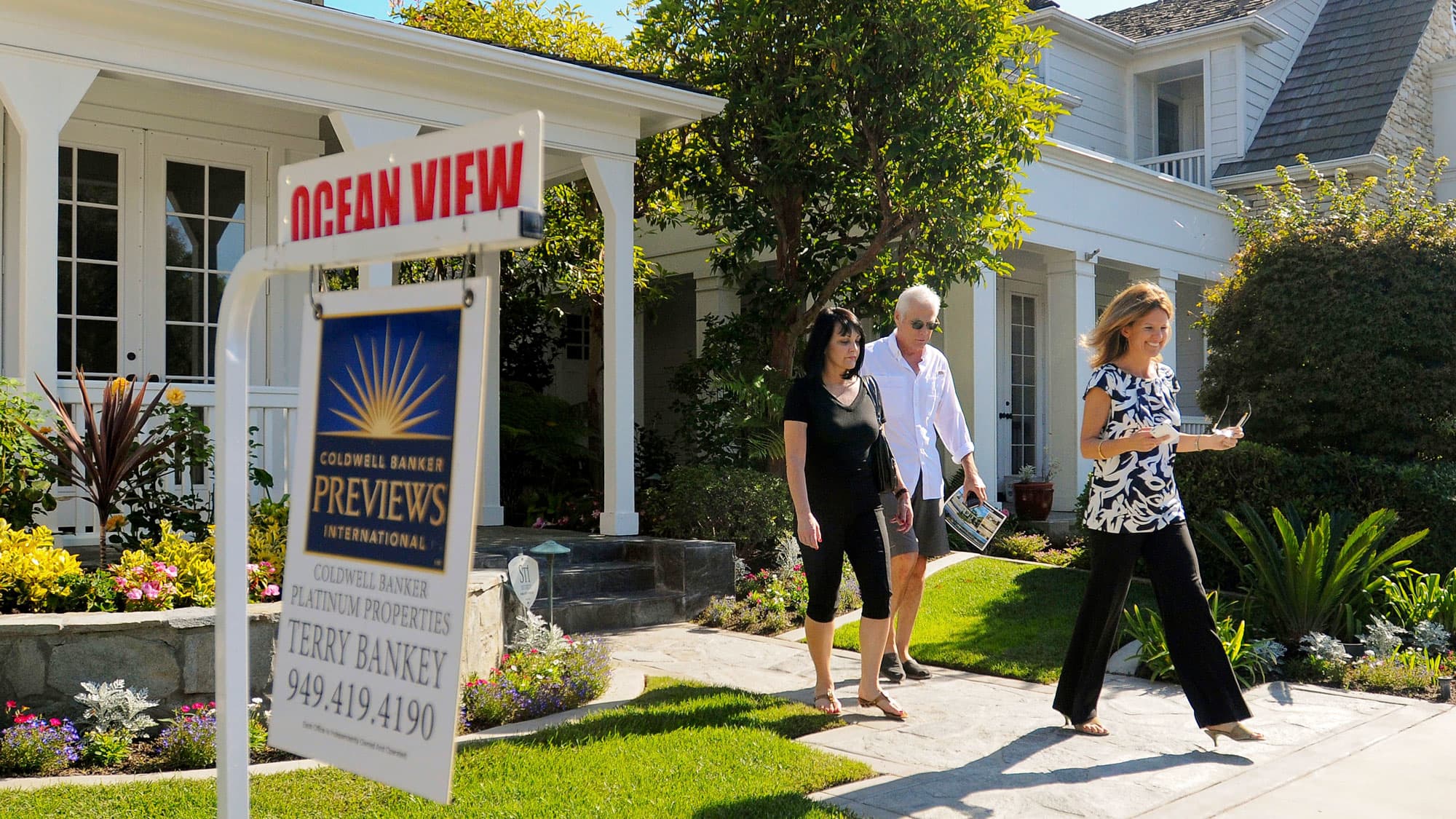A realtor, at right, shows prospective buyers a property in Newport Beach, California.
Jamie Rector | Bloomberg | Getty Images
Sales of existing homes jumped nearly 21% in June compared with May, according to the National Association of Realtors.
It was the largest monthly gain since the Realtors began tracking the data in 1968 and came after sharp declines over the previous three months due to the coronavirus pandemic. Sales were still 11.3% lower annually.
This count is based on closings, so it represents contracts signed in late April and May, before much of the national economy began to reopen and before the most recent surge in coronavirus cases.
“The housing market is hot, red hot, based on the data and the anecdotal prevalence of multiple offers,” said Lawrence Yun, chief economist for the Realtors “The urban area is less hot. We are clearly seeing trends for smaller towns or suburbs.”
Home sales could have been more robust, had there simply been more homes for sale. The supply of existing homes available fell a remarkable 18.2% annually to just 1.57 million homes for sale at the end of June. Based on the current sales pace, that represents a four-month supply. Last June 350,000 more homes were on the market.
“We are facing an acute inventory shortage especially at the lower price points,” said Yun. “The inventory levels are shrinking and shrinking, which could create a bottleneck for further home sales later.”
Mortgage rates are hovering near record lows and have been for several weeks. That is giving buyers more purchasing power but also helping to keep home prices elevated. The median price of an existing home sold in June rose 3.5% annually to $295,300. That is the highest price on record.
Much of the gains are likely from pent-up spring demand, but there are signs that it will continue at least through the summer. Mortgage applications to purchase a home were up 19% annually just last week, according to the Mortgage Bankers Association.
First-time buyers are also gaining strength, making up 35% of June buyers. That figure had been as low as 30% in recent months.
“The question, though, after this pent up demand for a backyard gets satiated, is whether the pace of transactions settle in along with the trend of jobs and income,” said Peter Boockvar, chief investment officer with Bleakley Advisory Group. “Also, the millennial demographic will be a huge swing factor in the coming years.”
Regionally, sales rose 4.3% month to month in the Northeast and were 11.1% higher in the Midwest. In the South, sales surged 26% monthly, and in the West sales jumped 31.9%.
Sales of newly built homes rocketed higher in May, thanks in part to the very low supply of existing homes for sale. Builders are benefiting from changing consumer wish lists, particularly for more high-tech homes, homes further out from metropolitan areas, and modern floor plans offering more individual rooms for home offices and home schooling.
There could be trouble on the horizon. Yun, the Realtors’ chief economist, said he is concerned about a second lockdown, as coronavirus cases surge in many parts of the country.
“Prices may not be damaged at all but the sales could,” he said. “Virtual tours are only making up 7% of buyers.”
